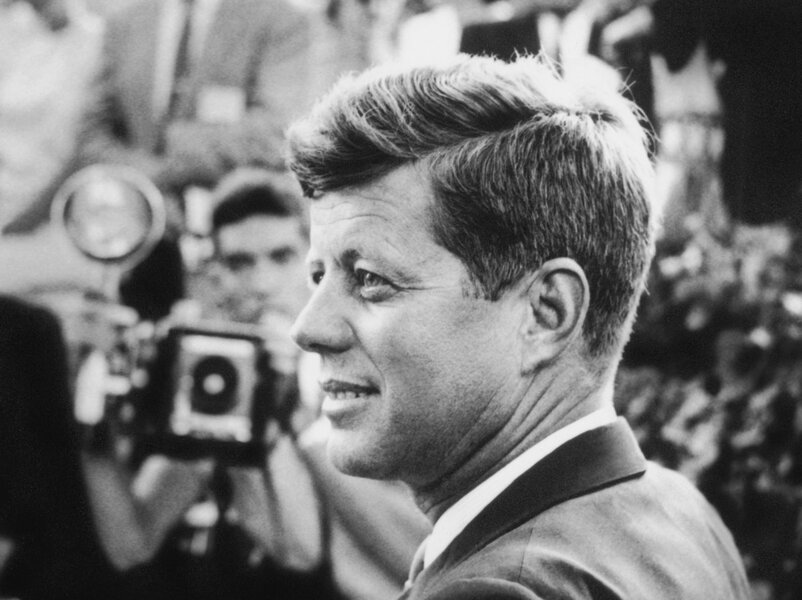White House turkey pardon: Did John F. Kennedy start the tradition?
Loading...
| WASHINGTON
Was John F. Kennedy the first US president to pardon a turkey? There’s evidence that’s the case, though he never used the word “pardon." He merely intervened to save poultry life.
It was 1963. The annual Rose Garden appearance of a couple of feathered gobblers wasn’t yet a White House tradition. It happened occasionally, but usually as a Christmastime event. Harry Truman accepted a number of December birds. During the Eisenhower administration, the president sometimes pushed the job off on Vice President Richard Nixon.
But in ’63, a California ad man named Leo Perlstein prodded the National Turkey Federation to donate a Thanksgiving turkey to Kennedy. What could be better publicity for the federation’s products, after all? JFK’s suave countenance would guarantee press coverage and, best of all, pictures. And the Kennedys consumed lots of turkey at their annual Thanksgiving gathering in Hyannis Port, Mass., at the family oceanfront compound.
And pictures there were. The handover took place on Nov. 19, 1963. Tanned, relatively young, and seemingly fit and hardy, JFK stands in the crowd of White House aides and poultry lobbyists like the tallest pine in the forest. The bird, standing on a table, is wearing a sign around its neck that says “Good Eating Mr. President." This appears undignified even by turkey standards, which are low.
But Kennedy didn’t plan to eat the bird, he told reporters. “We’ll just let this one grow,” he said, according to the Associated Press story of the occasion.
“It’s our Thanksgiving present to him,” said Kennedy.
JFK decided to spare the turkey at first sight, said the AP. Initially he thought they’d just keep it at the White House. But at 55 lbs., it was already so big he decided to return it to its California home for use in breeding.
The turkey’s entourage had come with a frozen 20-lb. bird for Kennedy’s personal use, but he asked that be donated to the Salvation Army.
The president planned to spend Thanksgiving at Hyannis Port, and expected to leave for the family place on Nov. 27, said the AP. He planned to remain there until Nov. 30, when he was scheduled to attend the Army-Navy football game in Philadelphia.
That’s the tragedy of this tale. He did not live to see the holiday. Kennedy was assassinated in Dallas four days later. The turkey presentation was perhaps his last light-hearted White House public event.
Kennedy’s magnanimity to turkeys didn’t catch on right way. Eventually President Nixon began dispatching some presented turkeys to a local petting farm, rather than eat them. But it was President George H. W. Bush who first offered a turkey an actual pardon, according to a White House history of the practice. Since then the practice has become an annual event that’s part irony, part tradition, like any good holiday show.








